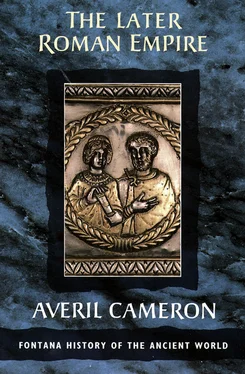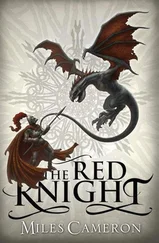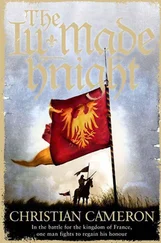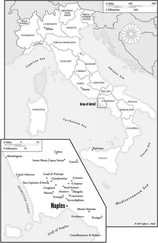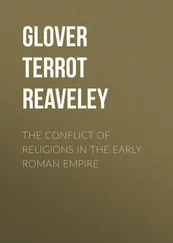Many of the changes that were taking place during his reign were in fact more a matter of long-term evolution than of individual initiative. It is often suggested, for example, that senators were excluded from posts in the provincial administration under Diocletian, who, like many other third-century emperors, had himself risen through the ranks of the army. But epigraphic evidence shows that senators were never excluded altogether; the fact that they were few in number at this period is a result not so much of imperial prejudice as of the decentralized conditions of the third century, which disrupted the existing patronage system, brought military commanders increasingly to the fore, and diminished the importance of the senate as an institution by locating the centre of government elsewhere than at Rome. Large numbers of extra provincial governors were needed to run the vastly increased number of provinces under Diocletian, and it is not surprising if they were in the first instance mainly of equestrian origin; the majority of provinces were accordingly placed under equestrian praesides . The separation of civil and military commands also doubled the amount of personnel needed. But senators were still used, for instance as correctores , regional governors in Italy. The distinction of title was kept, and when senatorial governors were reintroduced into a number of provinces by Constantine they were called consulares to distinguish them from the praesides , all of which suggests that the changes came about more for reasons of convenience and circumstance than of principle.
At the same time as supposedly favouring those of bluff military origin like himself, Diocletian is credited with transforming the Roman empire into a kind of ‘oriental despotism’ by importing court ceremonial and titles from Sasanian Persia. Fourth-century writers state that he was the first emperor to demand homage in the form of adoratio (prostration), and that he wore gorgeous clothes and lived in oriental seclusion; the term dominus (‘lord’) was freely used alongside more traditional (but proliferating) Roman imperial titulature and everything to do with the emperor was referred to as ‘sacred’ or ‘divine’. Again this development had earlier antecedents; even during the first and second centuries there had been a noticeable change in the style of imperial rule, as the stance of first citizen adopted by Augustus gave way to a more monarchic perception. Diocletian’s immediate predecessors, especially Aurelian, had taken further steps in this direction, and his alleged innovations should be regarded rather as marking the culmination and recognition of an existing trend. The titles Jovius and Herculius taken by Diocletian and Maximian and their Caesars were part of a similar development; earlier third-century emperors had already associated themselves on their coins with Jupiter, Hercules, and Mars in particular, and Aurelian claimed a divine protector in Sol Invictus (‘the unconquered sun’), to whom he set up a great temple in Rome. It would be quite wrong to regard this as mere packaging; all the same, concern for their public image and its presentation was certainly an important part of the tetrarchic style, and the divine titulature played an important role.
Much more significant in the long run, however, was the failure of Diocletian and the tetrarchs to reverse the decline in Rome’s status as the centre of imperial rule. Though the empire was not formally divided under the tetrarchy, several ‘capitals’ developed in different parts of the empire, notably at Nicomedia, Diocletian’s main residence, Serdica (Sofia), Thessalonica, the main seat of Galerius, Sirmium in Pannonia, the seat of Licinius, and Trier in Germany, which was the residence of Constantius Chlorus, the father of Constantine. In practice, emperors in this period commonly spent their time moving from one residence to another: other centres which now came to prominence were Naissus (Nis), Carnuntum on the Danube, Milan and Aquileia in Italy. Rome is rarely if ever on the imperial itinerary. This travelling, together with the plurality of imperial centres (the term ‘capitals’ is misleading), had several important corollaries. First, it greatly weakened the hold of Roman tradition on government and administration and in a sense freed Diocletian and his colleagues and successors to introduce innovations. Second, it fostered imperial building and stimulated urban development, for each centre needed to have certain basic requirements. A typical ‘tetrarchic capital’ would have at the very least a palace with a substantial audience chamber and a hippodrome for the ruler’s public appearances, as well as for chariot racing; Diocletian retired to Split in the former Yugoslavia to a palace built in this style, and Constantine also followed the pattern when he transformed the existing city of Byzantium into Constantinople (AD 330). Some of these cities were very substantial, especially Nicomedia, where Diocletian was proclaimed emperor, Constantine was kept as a youth at the court of Diocletian, and Lactantius employed as a rhetor, and where there was also a notable Christian church. Since laws were issued wherever the emperor happened to be at the time, imperial travels can be at least partly traced from the dates and places recorded for each law. Finally, in the reign of Diocletian, each tetrarch had his own staff of officials ( comitatus ), his own court ( sacrum cubiculum ) and his own military guard, so that Lactantius can be forgiven for resenting the total increase in posts.
On 23 February, AD 303, the church at Nicomedia was destroyed by an official party led by the praetorian prefect, and on the next day, Eusebius says, Diocletian issued an edict ordering that churches should be destroyed and Christian Scriptures burnt; Christians holding public office were to be stripped of their rank and imperial freedmen who did not recant were to be reduced to slavery. Other orders quickly followed, which were put into practice in the east, demanding that bishops be imprisoned and compelled to sacrifice to the gods. Optatus, an African Catholic bishop of the later fourth century, preserves the record of what happened at Cirta in Numidia when the local official, who was both a pagan priest and the curator of the city, put the first decree into practice: the bishop and his clergy brought out all their church property, which included a rather large amount of men’s and women’s clothing and shoes, but the commissioner had to go to the ‘readers’ for the Scriptures themselves, obtaining from them about thirty copies described as ‘books’ and twenty-two smaller volumes (Optatus, Appendix I; Jones, History of Rome through the Fifth Century , no. 174). The persecution was very unevenly carried out: Maximian and Constantius Chlorus in the west evidently showed little enthusiasm for the policy, even if we disregard Eusebius’s apologia for the latter, but in the east many bishops and clergy were imprisoned and tortured or mutilated, and the bishop of Nicomedia and others were beheaded. The persecution made a deep impression on contemporary Christians. Lactantius’s pamphlet On the Deaths of the Persecutors (De mortibus persecutorum ) was written when the persecution had ended and Constantine had defeated Maxentius; the work is a version of recent history designed to show beyond argument that God was indeed on the side of the Christians, and had horrible punishments in store for those who persecuted them. Soon after the ending of persecution in May, AD 311, Eusebius (who had escaped himself) wrote a moving account of what happened in his own province of Palestine, later incorporated into his Church History as book VIII; he had visited the ‘confessors’ (those who admitted to being Christians) who were imprisoned in Egypt, and saw some of them put to death. His own friend and mentor from Caesarea, Pamphilus, who was martyred in AD 310, was one of those whom Eusebius visited, assisting him to write while in prison a defence of the third-century Christian writer Origen, who had built up the great library at Caesarea. It has been pointed out that the overall numbers of those martyred during the persecution were small, and that its effects were geographically patchy, but Eusebius’s memorable account leaves no doubt as to the shock that was experienced by many eastern Christians.
Читать дальше
